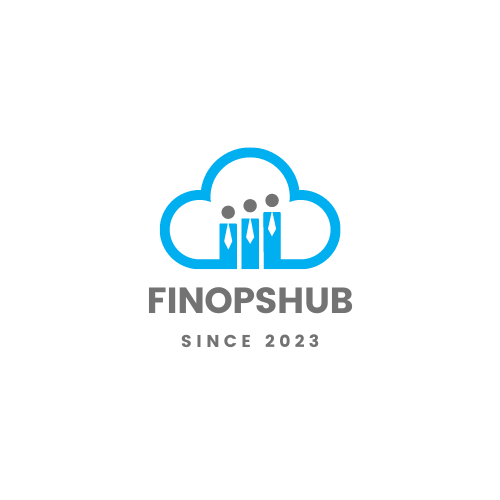To effectively manage your cloud costs, it is crucial to understand the foundational concepts and the importance of cloud budgeting and forecasting in a cloud computing environment.
Cloud Computing Models Explained
Cloud computing involves accessing IT resources as a service over the internet instead of maintaining your own computing infrastructure. These resources can include compute power, memory, networking, databases, and data storage.
There are several main types of cloud computing models, each with unique benefits and use cases:
Software-as-a-Service (SaaS): Allows users to subscribe to cloud-hosted applications, paying on a monthly or annual subscription basis. It is the most popular cloud model.
Infrastructure-as-a-Service (IaaS): Provides essential infrastructure resources such as compute, memory, networking, and storage through the cloud.
Platform-as-a-Service (PaaS): Offers a platform allowing customers to develop, run, and manage applications without the complexity of building and maintaining the underlying infrastructure.
Desktop-as-a-Service (DaaS): Delivers virtual desktops to users through the cloud.
Serverless Computing: Automatically scales cloud resources to run code without the need to manage servers.
Edge Computing: Processes and analyzes data closer to the data source, reducing latency and offering real-time services.
Here is a comparison of these models:
| Cloud Model | Description | Popular Usage |
|---|---|---|
| SaaS | Cloud-hosted applications | Office 365, Salesforce |
| IaaS | Basic infrastructure resources | Amazon EC2, Google Compute Engine |
| PaaS | Platform for application development | Google App Engine, Microsoft Azure |
| DaaS | Virtual desktops | Amazon WorkSpaces, Citrix Virtual Apps and Desktops |
| Serverless | Scalable execution of code | AWS Lambda, Azure Functions |
| Edge Computing | Localized processing | IoT applications, real-time analytics |
Importance of Cloud Budgeting
Effective cloud budgeting and forecasting are essential for companies to control costs and maximize the efficiency of their cloud investments. With the dynamic nature of cloud resource usage, it’s easy to overspend if not managed properly.
Incorporating cloud budgeting into your financial strategy helps:
Predict Costs: Understand and forecast future cloud expenditures accurately.
Control Spend: Implement spending limits and alerts to avoid exceeding budgets.
Optimize Resource Allocation: Allocate resources efficiently and reduce waste.
Implementing a sound cloud budgeting plan can also enhance alignment between your IT and finance teams, ensuring that operational goals are met without financial surprises. Explore our FinOps principles for more insights into optimizing cloud financial management.
Cloud budgeting and forecasting should be an integral part of your FinOps framework to ensure that your organization remains agile, efficient, and cost-effective in its cloud usage.
By fully grasping these fundamentals, you can foster a robust financial strategy that aligns with your cloud computing goals, making the most out of your cloud investments.
Implementing FinOps Strategies
Role of Budgeting and Forecasting
Budgeting and forecasting play a crucial role in FinOps management, allowing you to plan and predict cloud expenses over specific periods. This approach is especially important for optimizing cloud financials to meet business goals and maximize returns on investment (Finout).
Effective cloud budgeting and forecasting enable your organization to:
- Control cloud costs
- Optimize resource usage
- Reduce overall expenses
- Promote a cost-aware culture
Incorporating these practices into FinOps ensures that your organization has the necessary resources to meet cloud computing needs while managing costs effectively.
This proactive approach helps you avoid unexpected expenses and plan your budgets more accurately.
FinOut’s Budgeting Solution
FinOut’s budgeting and forecasting solution stands out as an effective tool for managing cloud costs. This solution offers a clear view of cloud expenditures, helping you identify which departments, teams, or projects are driving costs (Finout).
Key features of FinOut’s solution include:
- Cost Control: Monitor and control cloud expenses to avoid budget overruns and allocate resources efficiently.
- Usage Optimization: Optimize the use of cloud resources, ensuring that you are only paying for what you actually need and use.
- Accountability: Promote a cost-aware and accountable FinOps culture within your organization.
Cloud-based budgeting and forecasting technology like FinOut’s comes with several advantages, including:
- Lower Initial Costs: Most services are charged based on usage fees, significantly reducing the barrier to entry compared to traditional software.
- Minimal IT Requirements: Little to no IT work is required, saving your business both time and money (Kepion).
| Advantage | Description |
|---|---|
| Lower Initial Costs | Charges based on usage fees rather than software costs |
| Minimal IT Requirements | Require little to no IT work, saving time and money |
For more information on managing cloud costs, check out our articles on 10 cloud cost reduction strategies and rightsizing cloud resources.
By leveraging tools like FinOut’s budgeting solution, your organization can stay on top of cloud financial management, ensuring that budgeting and forecasting align with your operational and financial objectives.
For additional strategies, you can check articles like 10 cloud cost reduction strategies. To understand the management of costs across various providers, visit manage costs across multiple cloud providers.
For further insights into FinOps management, explore our articles on what is FinOps and FinOps principles.





